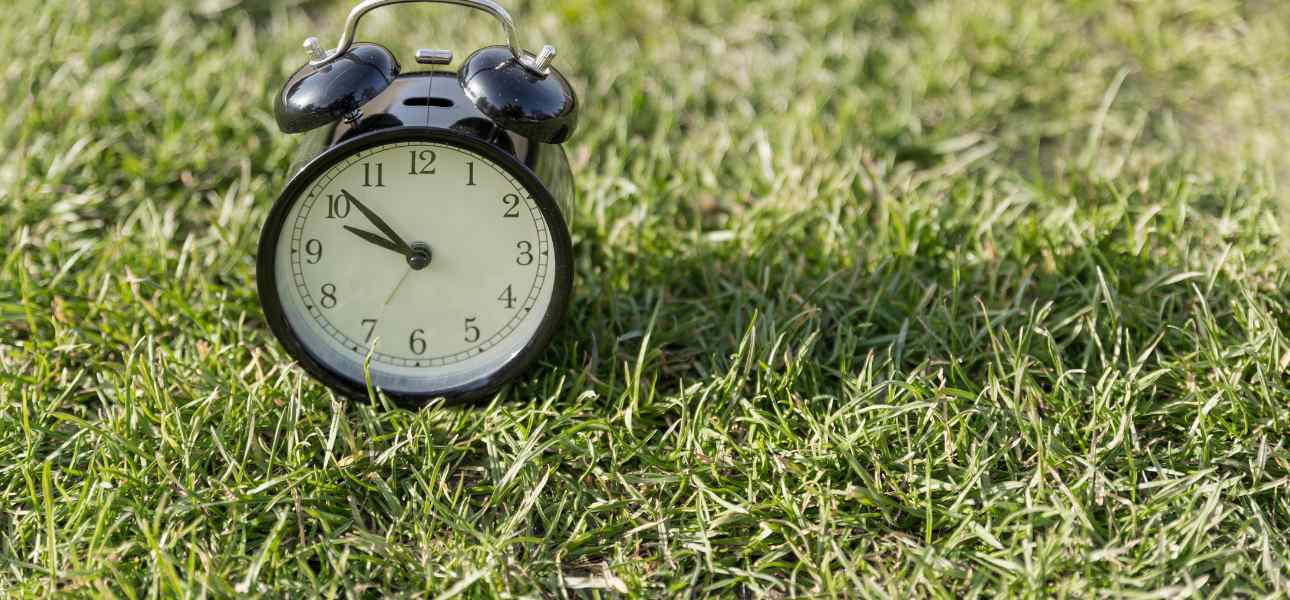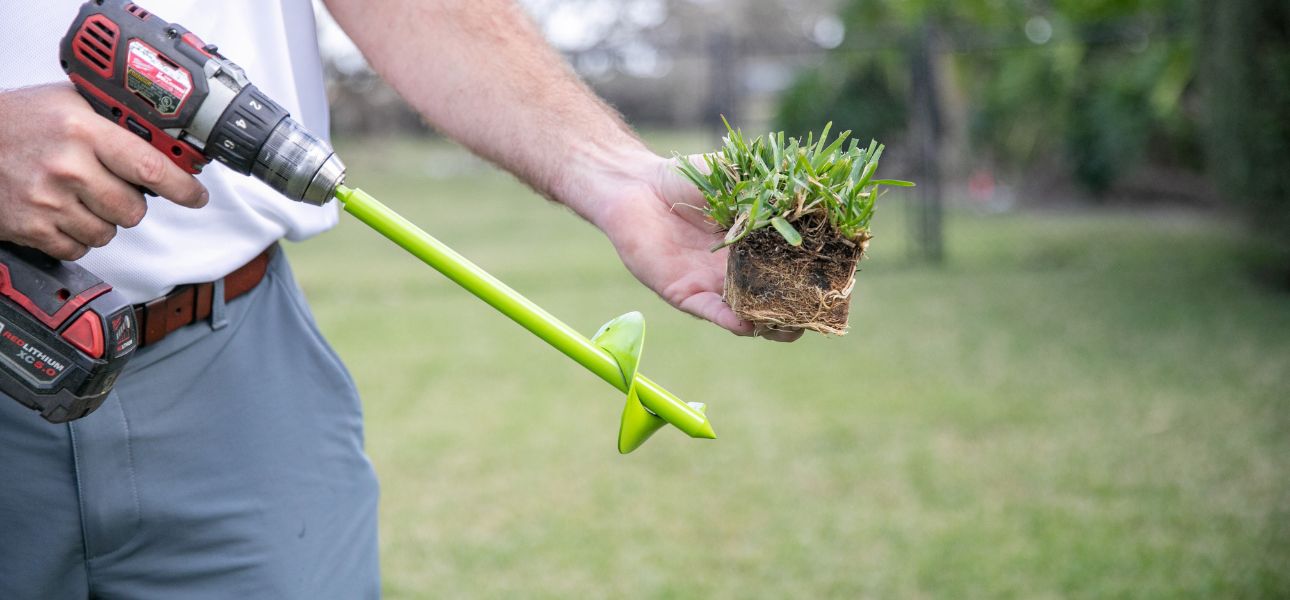How Long Should You Water Your Lawn?

There are many ways you can water your lawn the wrong way — water too much, too often, too little, or at the wrong times. Either way, these poor practices can adversely affect your lawn. Overwatering not only wastes a valuable resource but can also lead to shallow root systems, make your lawn more susceptible to pests and diseases, and contribute to thatch buildup.
Meanwhile, underwatering can stress your grass, leading to poor growth, wilting, and increased vulnerability to drought. Additionally, watering at inappropriate times, such as at noon when the sun is at its peak, can lead to water evaporation even before it reaches the roots, wasting water and potentially damaging your grass.
As warmer temperatures signal the arrival of spring, they also mark the beginning of the peak of lawn maintenance for many homeowners. For starters, understanding the best practices for watering lawns is key to maintaining its health and appearance from season to season.
Spring Lawn Care Tips: How to Water Your Grass the Right Way
When watering your lawn, the general rule is to aim for 1 to 1.5 inches of water per week, including rainfall. This amount can be applied in a single session or staggered into 2-3 sessions throughout the week. However, it is generally advised to water deeply and less often rather than lightly and frequently to encourage deeper root growth, which makes your lawn more resilient to drought. The duration of your watering sessions to achieve the recommended amount will depend on the output of your irrigation system.
Tuna Can Test — How Long to Water Your Lawn
One way to gauge the amount of water your sprinkler delivers is by placing empty tuna cans across your lawn when watering. Run your sprinkler and measure the water level in the can every 15 minutes or so. Once you reach the desired water level for your grass, record the amount of time that you watered the lawn.
In many cases, the recommended amount of watering translates to 20-30 minutes of watering at a time, 2-3 times a week. However, these are simply general guidelines, and you should adjust the duration and frequency of watering based on the specific conditions of your lawn. It's important to monitor your lawn regularly and adjust your watering schedule as necessary to strike a balance between over and underwatering.

Other Factors to Consider When Watering Your Lawn
Watering your lawn based solely on time does not accurately determine how much water your grass is receiving or whether it's enough. Ideally, watering times should be guided by factors such as the type of grass you have, whether your lawn is new or established, and the current weather conditions.
Grass Type
Cool-season grass generally needs more water than warm-season grass like Zoysia, St. Augustine, and Bermuda grass, requiring approximately 20 times more water. This is partly due to warm-season grasses being more drought-tolerant, thriving in the warm climates of Florida.
All types of grass usually require more water during their peak growing season, which for warm-season grasses is late spring to early fall. The increased water needs support the vigorous growth and development of the grass.
Newly Planted Grass Plugs
Newly planted grass plugs have different watering needs compared to an established lawn. They require consistent watering to keep the top layer of soil consistently moist for 10-14 days, helping the roots adapt to the soil.
Additionally, how you establish your lawn will affect watering requirements, as grass seeds require more watering from germination. Meanwhile, because grass plugs have already established roots, they need far less watering for success.
Weather
The weather also plays a significant role in determining how much water your lawn needs. Grass requires more water when it is actively growing and less during dormancy. Warm-season grass may go dormant in the winter when temperatures consistently drop below 60 degrees F. During dormancy, the grass may survive without water for 1-2 weeks. However, occasional watering remains necessary even though the grass may appear brown and lifeless. The roots and crowns remain intact, and watering will keep them hydrated and prevent desiccation.
Additionally, warm and cool-season grasses can benefit from supplemental watering in the summer to keep them green. On particularly hot days, some extra watering will prevent drought stress and damage.

How to Tell if Your Lawn is Getting Enough Water
You will see visual signs your entire lawn is not getting enough water — wilting grass blades that may look limp, curled, or folded and patches of dead grass across your landscape. The grass may also turn a dull bluish-gray or purple hue, in contrast to its vivid green color when watered adequately.
Additionally, you may see footprints or tire tracks that remain visible long after they are made, indicating that the grass is not resilient enough due to lack of moisture.
How to Water Your Lawn Properly
It may not be immediately visible, but there are several consequences to watering your lawn too much or too little. Overwatering is wasteful and can lead to the proliferation of lawn weeds. When the soil remains saturated for an extended period, it also becomes more susceptible to lawn disease. Proper watering practices are essential to maintain a healthy lawn. On the other hand, underwatering can result in dry, brittle grass, and the eventual death of your grass.
Along with making the effort to determine how long you should water your lawn, identifying when in the day to water it can play a significant part in how effective your efforts will be in maintaining a healthy, green lawn. Below are some tips to maximize your watering efforts.
Water in the morning. Watering early in the day, preferably from 6-10 am, allows enough time for the water to penetrate the soil and roots. Much later in the day, when the sun is at its peak, any moisture will simply evaporate. Alternatively, watering late at night means the moisture will sit on your grass overnight, potentially leading to fungal growth.
Choose a grass well-adapted to your local climate. In Florida, most homeowners grow warm-season grasses like Bermuda grass plugs, because they are naturally drought-tolerant and require less watering, sometimes as little as once a week. These grasses establish deeper roots that enable them to withstand extended periods of water scarcity. During dry spells, the grass may go dormant and turn brown, but it should green up again once the weather becomes more favorable.

Establish Water-Efficient Lawns with SodPods® Grass Plugs
Establishing a lawn from grass plugs further contributes to the drought tolerance of your lawn. Grass plugs come with an established root system that allows them to access water deeper into the soil, making them more resilient to prolonged periods of drought. This deep root system helps the grass plugs survive with less frequent watering, ultimately contributing to a more sustainable and drought-tolerant lawn.
SodPods® are grass plugs consisting of mature grass and a dense root system, which you can use for establishing a lawn or filling in sparse areas or bare patches in your lawn. Each plug measures approximately 3 inches by 3 inches, and we recommend planting them at 9-12 inch intervals for optimal results. For more successful grass plugging, supplement your plugs with NutriPod® grass plug fertilizer, which provides the essential nutrients to facilitate healthy growth and development.
Buy grass plugs at the Try SodPods® website today!

